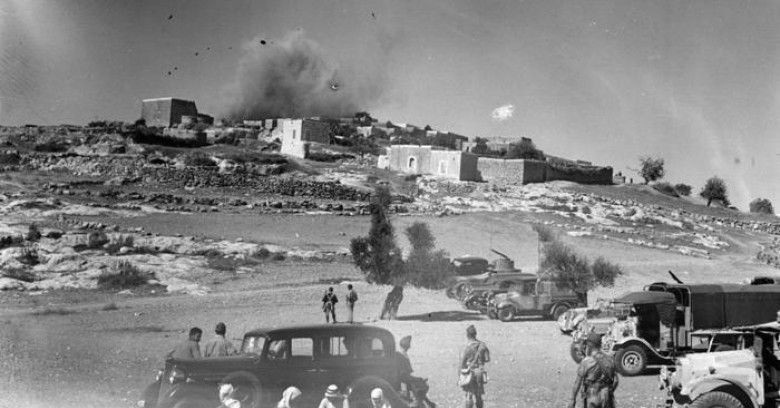RAMALLAH, November 20, 2011 (WAFA) – Settlements are the biggest obstacle to the use of agricultural holdings parcels in the Palestinian Territory, according to a press release published Sunday by the Palestinian Central Bureau of Statistics (PCBS).
PCBS President, Ola Awad, announced the final results of the first agricultural census in the Palestinian Territory in 2010, in which 2010 data indicated that 7,835 agricultural holdings in the West Bank were constrained in using agricultural holdings parcels due to the expansion and annexation wall, said the press release.
It added that 12,797 holdings were constrained in using agricultural holdings parcels by settlements, and 7,292 holdings were constrained by military barriers, while 7,971 holdings in the Palestinian Territory were constrained in using agricultural holdings parcels by land being in closed military areas.
Awad said there are 111,310 agricultural holdings in the Palestinian Territory: 90,908 in the West Bank and 20,402 in the Gaza Strip. About 71% of the agricultural holdings during the agricultural year 2009/2010 are plant holdings with 79,175 of them, or 71.1% of the total number of agricultural holdings, in the Palestinian Territory: 82.4% in the West Bank and 17.6% in the Gaza Strip.
There were 17,894 mixed holdings in the Palestinian Territory: 82.5% in the West Bank and 17.5% in the Gaza Strip. There were 14,241 animal holdings in the Palestinian Territory: 76.4% in the West Bank and 23.6% in the Gaza Strip.
Around 29% of agricultural holders aged 40-49 years: The results indicated that there were 110,104 agricultural holders in the Palestinian Territory, with 28.6% of them in the 40-49 year age group during the agricultural year 2009/2010: this age group made up 28.9% of all agricultural holders in the West Bank and 27.3% in the Gaza Strip.
About 79% of agricultural holdings cultivated with permanent and temporary crops:
In the agricultural year 2009/2010, the total area of agricultural holdings in the Palestinian Territory was 1,207,061 dunums; 1,105,146 dunums in the West Bank and 101,915 dunums in the Gaza Strip. Based on land use, the total area of cultivated land, including land under permanent and temporary crops, nurseries, temporarily fallow, and forests, amounted to 1,029,280 dunums, which is equivalent to 85.3% of the total area of agricultural holdings in the Palestinian Territory; 90.8% in the West Bank and 9.2% in the Gaza Strip.
The non-cultivated area of land, which includes buildings used for the purposes of the holding, permanent meadows and pastures (permanent fallow), pools, corridors, nonarable land, and non-covered folds, amounted to 177,781 dunums, which is equivalent to 14.7% of the total area of agricultural holdings in the Palestinian Territory: 95.7% in the West Bank and 4.3% in the Gaza Strip.
Results also indicated that the total cultivated land area in the Palestinian Territory during the agricultural year 2009/2010 was 957,170 dunums: 92.1% in the West Bank and 7.9% in the Gaza Strip as on 01 October 2010.
During the agricultural year 2009/2010, the total area cultivated with tree horticulture, vegetables, and field crops in the Palestinian Territory was 926,466 dunums: 841,212 dunums in the West Bank and 85,254 dunums in the Gaza Strip, said the press release.
Jenin governorate has the highest amount of cultivated land, constituting 19.2% of the total cultivated area in the Palestinian Territory. About 33% of the area cultivated with field crops was in Hebron governorate: The total area cultivated with field crops in the Palestinian Territory during the agricultural year 2009/2010 was 241,937 dunums; 223,906 dunums in the West Bank and 18,032 dunums in the Gaza Strip.
Hebron governorate had the greatest amount of cultivated land, with 32.7% of the total area cultivated with field crops in the Palestinian Territory.
The total area cultivated with vegetables in the Palestinian Territory during the agricultural year 2009/2010 was 127,257 dunums; 100,579 dunums in the West Bank and 26,678 dunums in the Gaza Strip. Jericho and Al-Aghwar governorate had the greatest amount with 20.7% of the total area cultivated with vegetables in the Palestinian Territory.
Total area cultivated with tree horticulture in the Palestinian Territory during the agricultural year 2009/2010 was 557,272 dunums; 516,727 dunums in the West Bank and 40,545 dunums in the Gaza Strip. Jenin governorate had the greatest amount with 18.5% of the total area cultivated with tree horticulture in the Palestinian Territory.
The number of horticultural trees in the Palestinian Territory totaled 11,284,844 trees, of which 88.2% in the West Bank and 11.8% in the Gaza Strip. Olive trees had the greatest amount with 67.3% of the total number of horticultural trees in the Palestinian Territory, while this percentage was 71.6% of the 3 total numbers of horticultural trees in the West Bank and 35.3% of the total number of horticultural trees in the Gaza Strip.
In a related matter, the number of cattle in the Palestinian Territory totaled 34,097, of which 71.7% were in the West Bank and 28.3% in the Gaza Strip. Hebron governorate had the highest number of cattle with 24.8% of the total cattle in the Palestinian Territory, while Jerusalem had the lowest with 1.1% on 01 October 2010.
The number of sheep in the Palestinian Territory totaled 568,287, of which 89.2% were in the West Bank and 10.8% in the Gaza Strip. The highest number of sheep was in Hebron with 25.8% of all sheep in the Palestinian Territory on 01 October 2010.
The number of goats in the Palestinian Territory was 220,085, of which 94.5% were in the West Bank and 5.5% in the Gaza Strip. The highest number of goats was in Hebron with 22.5% of all goats in the Palestinian Territory on 01 October 2010.
There were 1,525 camels in the Palestinian Territory, of which 49.2% were in the West Bank and 50.8% in the Gaza Strip. Gaza governorate had the highest percentage of camels with 18.9% of all camels in the Palestinian Territory on 01 October 2010.
During the 2009/2010 agricultural year, there were 402,623 mothers of broiler birds in the Palestinian Territory, 33,270,609 broilers, and 1,601,941 layers. There were also 533,130 turkeys.
There were 38,216 beehives in the Palestinian Territory, of which 76.0% were in the West Bank and 24.0% in the Gaza Strip. Khan Younis governorate had 10.0% of all the beehives in the Palestinian Territory on 01 October 2010, added PCBS.
There were 292,031 employees in agricultural holdings in the Palestinian Territory; 94.6% of them unpaid family members and 5.4% permanent paid employees during the agriculture year 2009/2010.
The also results indicated that 64.9% of all plant and mixed holdings in the Palestinian Territory used organic fertilizers; 34.8% used chemical fertilizers, 49.7% used agricultural pesticides, 25.1% used improved plant assets (seeds, transplants, and tubers), and 18.4 % used integrated pest management.
The results also indicated that 85.3% of all animal and mixed holdings in the Palestinian Territory vaccinated animals against epidemic diseases.
There were 472 holdings with a fishery in the Palestinian Territory: 51.3% in the West Bank and 48.7% in the Gaza Strip during the agricultural year 2009/2010.
There were 21,077 holdings whose income constituted the main source of income to the household; 73.5% in the West Bank and 26.5% in the Gaza Strip during the agricultural year 2009/2010.
The census study was conducted in complicated political and financial conditions, and would not have been accomplished without the genuine support of a number of international and national institutions.
The Agricultural Census 2010 was carried out with joint funding from the Palestinian National Authority (PNA), the Islamic Development Bank (IDB), the World Bank (WB) and the European Union (EU). Ms. Awad also added that the Agriculture Census 2010 is a national project that required the cooperation of many national institutions.
The project was led by PCBS in cooperation with the Ministry of Agriculture and Union of Agricultural Work Committees. The successful implementation of the census was only possible because of the overwhelming support and contributions of the Census’ Executive Committee, Census’ technical and administrative working groups, in addition to other various supportive committees in the different governorates.
R.Q./F.J.










